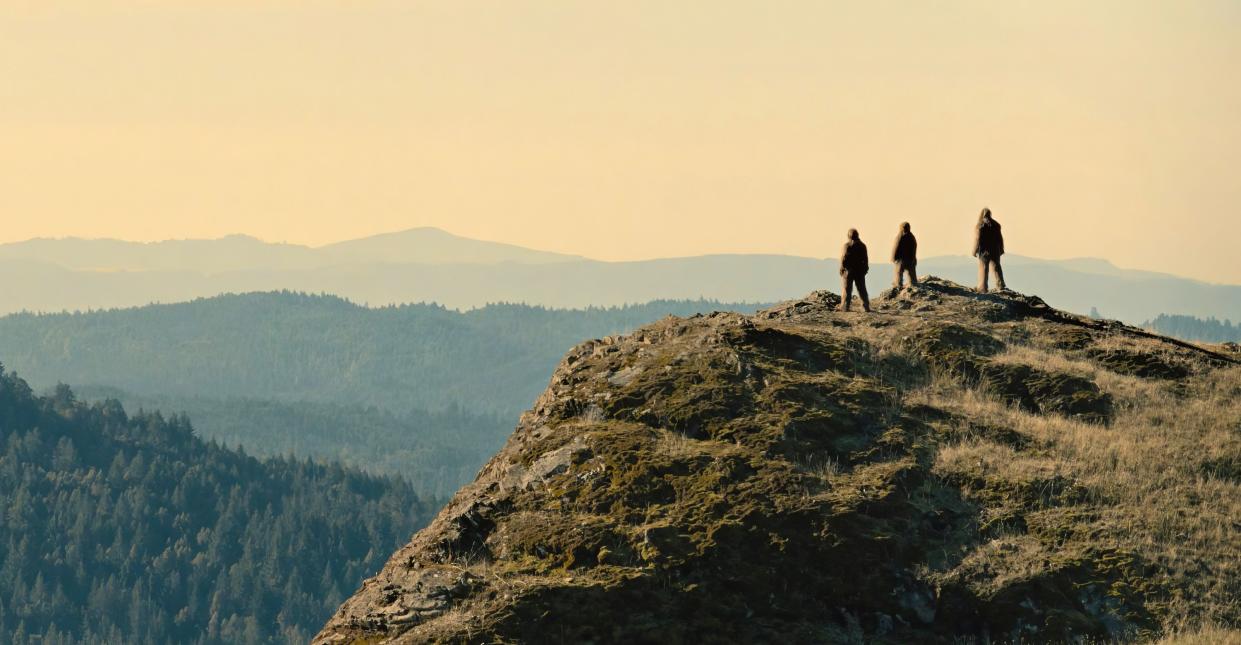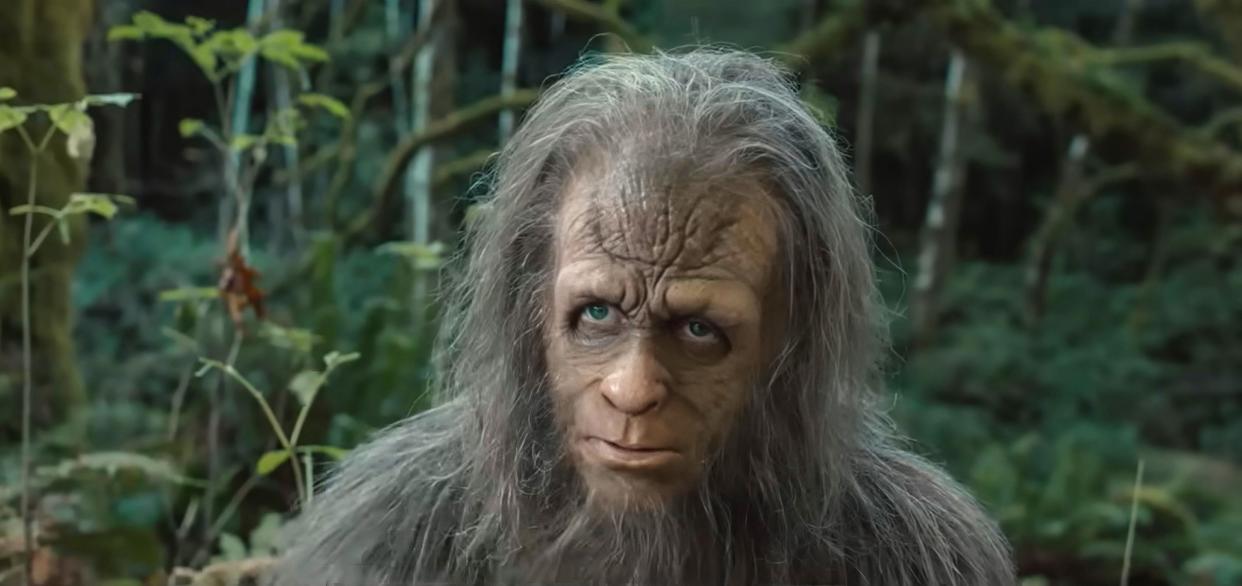'Sasquatch Sunset' is so relentlessly gross that people are walking out of screenings. Star Jesse Eisenberg says the film was a ‘labor of love.’
Early screenings of the movie Sasquatch Sunset made headlines for sending dozens of theatergoers fleeing for the exit during scenes with graphic depictions of every possible bodily function. Those scenes are relentless throughout its 90-minute runtime.
Jesse Eisenberg, one of the film’s stars and producers, told Yahoo Entertainment he’s been more focused on the response he’s gotten from most viewers — that the film was a “life-changing visual experience.”
“Whenever you make something unusual, it’s going to turn people off,” he said. “There are so many movies made for people who like typical things. This is not that.”
Eisenberg is one of four members of a nomadic cryptid family in Sasquatch Sunset, along with Riley Keough, Christophe Zajac-Denek and Nathan Zellner, who also co-directs with brother David Zellner. They go about their daily lives, hunting, gathering, excreting, mating and exploring the world around them with unbridled frankness. It will have its national theatrical release on April 19.

Eisenberg said he’s aware people might be surprised that big-name stars like himself and Keough would invest so heavily in the movie, both as actors and producers, but he said he was just one of many people to “fall completely in love” with the story at an early stage.
“If you’re a financier, this is a risky prospect because it’s so unknown,” he said. “But if you’re in the creative parts of the industry, what you read is one of the most brilliant things you’ll ever come across — genuinely unusual, really funny and emotional, character-centric and earnest.”
The script has plenty of dialogue — however, it’s just hooting and grunting. There’s no voiceover narration that so often accompanies documentary footage of so-called Sasquatches. The camera zeroes in on the mundane (and revolting) everyday activities of its fur-coated characters, bucking the conventions of a traditional theatrical experience at every turn.
“It was a labor of love for every single person who was involved,” Eisenberg said, from the movie’s unconventional directors to its high-profile stars and cinematographer Mike Gioulakis (Us) to its enthusiastic investors. There are more than 30 people listed as producers on the movie’s IMDb page.
Becoming a Sasquatch
For the actors, that “labor” was literal. The Planet of the Apes movies use motion capture to give characters a more enhanced, primate-like appearance, but Sasquatch Sunset brought its Bigfoot family to life without computer-generated wizardry. Eisenberg said he and his three Sasquatch co-stars spent hours early in the morning being covered in glue, then prosthetics, followed by paint and hair on every part of their bodies — even unexpected ones, like their eyelids and nostrils. He said it was “claustrophobic … psychologically taxing and physically exhausting.”

“It was worth it, though, because you look in the mirror and see … you’re the living embodiment of somebody else’s work of art,” he said. “Our [Sasquatch] faces are illustrative of our characters’ experiences.”
Once suited up as Sasquatches and caked in makeup, the cast filmed deep in the California Redwoods. They studied the 1967 Patterson/Gimlin film, reputedly footage of an alleged Sasquatch. Then they attended a “Sasquatch boot camp” with movement coach Lorin Eric Salm. There they acquired some version of Sasquatch “language,” primitive as it was.
“When we’re calling for another Sasquatch, it’s a high-pitched shriek,” Eisenberg said. “When we’re foraging for food, it’s more of a focused grumbling.”
Nathan Zellner would sometimes direct scenes from within his Sasquatch costume. Other times, he’d fold it over his waist to expose a regular shirt, but keep on a Sasquatch mask and makeup.
Eisenberg said the most memorable scene they worked on was also one that led to so many walk-outs at festival screenings: The family comes across a man-made road, which terrifies them at first, then triggers their instinct to “dominate and attack it with pee.” A deluge of bodily fluids ensues.
“The audience has been engaged with them up to this point, but at this moment, it all looks so absurd,” Eisenberg said. “To me, the movie accomplishes this amazing thing where you can laugh at these characters and also feel for them in that same moment.”
He added: “It’s an art project in the sense that I can’t think of anything else that’s quite similar to it.”


